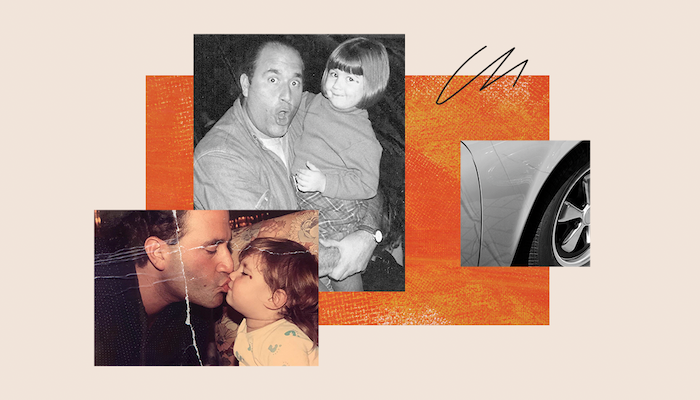Patients want comfort and peace at the end of life, but each one defines this differently. Death is a deeply personal journey, and more than anything when facing death, patients want medical providers and loved ones to hear and value their unique needs.

By Sharleen Lucas, RN
- Dying patients want comfort and peace. Each patient defines this differently, but there are 7 common requests they make.
- They want dignity and open talks about their illness and their treatment.
- They want to be comfortable.
- They want relief from burdens, time with loved ones, and a legacy that outlives them.
- They may even want to die alone.
Death is a sacred journey, unique to each person. Knowing what a dying loved one wants is what matters.Patients with advanced illnesses may have a few days or years to live. The phrase “end-of-life” refers to the final stage of an incurable disease or injury. A time frame does not define this last stage of life because it’s a unique journey for each person.
“Every death journey follows along the same path in different ways,” explains Delta Waters, a death doula, and registered nurse. Like birth, each patient has unique symptoms and desires.
Patients, end-of-life specialists, and researchers agree on these seven common requests from dying patients.
1. Dignity
Dignity refers to a person’s inherent nobility and worth. Respecting a patient’s dignity is one of the most common values held by patients, loved ones, and medical providers alike.
But dignity is not an objective, one-size-fits-all concept. It means something different to each person.
“To most end-of-life patients, dignity means, ‘Until my dying breath, I feel like you treat me as if I’m alive and cared for,'” said Beth Patterson, a certified end-of-life doula, and veteran palliative care chaplain.
To one patient, feeling alive and cared for might mean staying on a life-saving machine until they die. To another, however, removing devices is more dignified. Some patients may want a family member to care for their bodily needs, while others may hire an objective caregiver.
Either way, honoring a patient’s wishes whenever possible is the best way to honor their dignity.
2. Open talks
When you’re well, you don’t care to talk about sickness. But when you’re sick, almost everyone wants to talk.
According to a 2011 study of Californian’s attitudes toward end-of-life, 79% of people would “probably” or “definitely” want to talk with a doctor about end-of-life treatment if diagnosed with a serious illness.
Most patients want frank discussions, but some don’t, asking doctors to give the hard truth to their loved ones instead. Many want to know how the medical team will treat their pain and symptoms. A few want to know what the end will be like. Sometimes patients want advice on talking with family or finding meaning in their final days.
Studies confirm that when medical providers talk openly with patients and their loved ones about their dying journey, it improves the quality of life for the patients and their families. It also decreases excessive treatment – which often causes greater patient suffering.
The 2011 study in California found that a quarter of Californians faced language issues with their medical providers, drastically reducing their quality of care. To prevent this, medical providers are required to provide interpreters.
But not all talking needs to be about a patient’s end-of-life treatment, Waters told me. A simple chat over a cup of coffee about whatever comes to their mind helps dying patients feel normal.
3. Comfort and symptom relief
It’s not surprising that dying patients want to be comfortable. Most importantly, comfort means symptom relief, but it also includes how and where they want to die. Most people prefer to die a natural death at home rather than in a hospital connected to machines.
Common end-of-life symptoms include pain, shortness of breath, increasing weakness, anxiety, nausea, loss of appetite, and thirst. Some patients want these symptoms controlled to the point where they mostly sleep. Others choose to endure some discomfort to be awake with loved ones.
Doctors and nurses provide many medical tools for managing symptoms. Patients may also find relief from complementary and alternative therapies.
The goal of symptom relief is comfort – as defined by the patient. Not clearly understanding a patient’s symptoms and desires for comfort can increase their suffering.
4. Relief from burdens
End-of-life patients worry about their families, their finances, and what the end is like. Most of all, dying patients want to know their loved ones will be okay.
One of the best ways to ease these burdens is hospice care. Hospice offers holistic care and counseling for patients facing their last six months of life. With care provided by nurses, aides, medical social workers, counselors, and volunteers, hospice is typically free of charge thanks to Medicare coverage and hospice fundraising.
Sadly, however, most patients wait too long to start hospice. Instead of using hospice for their last six months of life, about 50% of patients only use it for their final 18 days or less.
Contacting hospice sooner helps relieve patients and loved ones of their worries. At a time when every day counts, hospice may even lengthen patients’ lives for up to 29 days.
5. Time with loved ones
Most dying patients want to spend as much time as possible with loved ones. Many want to strengthen relationships, resolve old hurts, and pass on love, wisdom, and stories.
In his book, Dying Well, Dr. Ira Byock says there are five necessary statements to say to your loved ones at the end of life.
- Forgive me
- I forgive you
- Thank you
- I love you
- Good-bye
These statements help relieve the spiritual and relational burdens of both the dying and their loved ones.
6. A legacy
Loretta Bruening, Ph.D., founder of the Inner Mammal Institute, writes, “You are hard-wired to care about what you leave behind when you’re gone…The neurochemistry that drives animals to promote their genes is what drives you to care about your legacy. Understanding that is important to your happiness.”
Contributing to others and leaving a legacy is called generativity in psychology. It refers to the need of humans later in life to leave their mark. They want to create something that will live after they die.
End-of-life studies support this, saying dying patients show a need to contribute to their community to feel needed, significant, and remembered. Some patients create gifts, start projects, continue to work or make financial donations. Others offer time and knowledge to their community and loved ones.
After working with thousands of dying patients, Patterson knows the importance of a legacy unique to each person. She told me about one patient who left a legacy of “words and actions” by earnestly creating videos for his wife and the first responders he led as captain of the fire station. In contrast, Patterson also recalled a Buddhist coworker who felt no need to create a legacy because her “life was her legacy.”
7. Maybe to die alone
As Waters reminds us, “In the end, even though death is a universal human experience, it’s still a solitary journey for each person.” And some want it that way.
As an RN, I cared for a dying patient in the hospital who lived days longer than his family expected. At age 90, with a failing heart, we thought death would come quickly. His family sat with him each day, taking turns at night. They grew exhausted after several days but were grateful to be with him.
They wondered why he held on so long. We discussed that perhaps he wanted to die alone, so the family decided to go to dinner together, leaving the patient with our staff for an hour.
Not long after they left, his breathing changed and slowed, eventually stopping before the family returned.
Patients who want to die alone are common, according to hospice staff and death doulas. It can be hard on loved ones, but letting patients die alone if they want to is another way to honor their wishes and dignity.
There’s no “right” way to die. Death is an individual’s sacred and one-of-a-kind moment. What matters is honoring each patient’s unique dignity and desires.
Complete Article ↪HERE↩!







